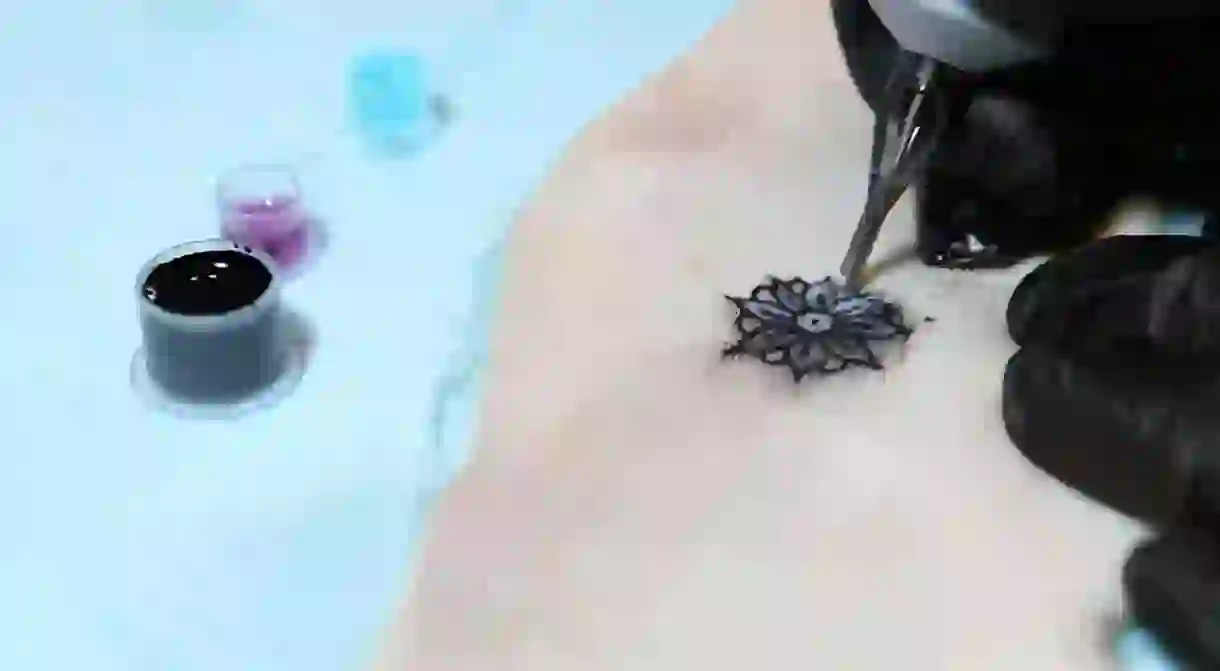These New Tattoo Inks Could Monitor Your Health

A new series of tattoo inks are designed to change color with chemical fluctuations in the bloodstream. In collaboration with Harvard Medical School students Ali Yetisen and Nan Jiang, MIT Media Lab researchers Katia Vega, Xin Liu, Viirj Kan, and Nick Barry have cultivated new tattoo inks that double as a “biosensors.” Operating under the name DermalAbyss, the project replaces ordinary tattoo inks with ink-like substances that track changes in your bloodstream.

“Blend[ing] advances in biotechnology with traditional methods in tattoo artistry,” DermalAbyss would turn the skin into an “interactive display.” So far, the aspirant syndicate has developed a pH sensor that transitions between pink and purple, a glucose sensor that shifts between blue and brown, and two fluorescent sensors linked to your sodium and chromogenic pH values.

The project’s website stresses that DermalAbyss remains in the research phase, having only been tested on “ex vivo” pig skin. But the concept has potential far beyond its current stage, insofar as it creates “direct access to compartments in the body and reflects inner metabolic processes in [the form] of a tattoo,” the website reports. These “tattoos” would then continuously monitor “medical diagnostics … and data encoding in the body.”

A given example is the diabetic, who tracks their glucose levels between three and 10 times a day through a painful procedure that repetitively breaks the skin. But DermalAbyss would only require the brief, one-off discomfort of getting the tattoo. Once the ink is injected into the skin, the glucose biosensor would simply change color to indicate whether insulin is required.

Given the pervasive popularity of tattoos, DermalAbyss could drastically improve lives—and look good doing it.













